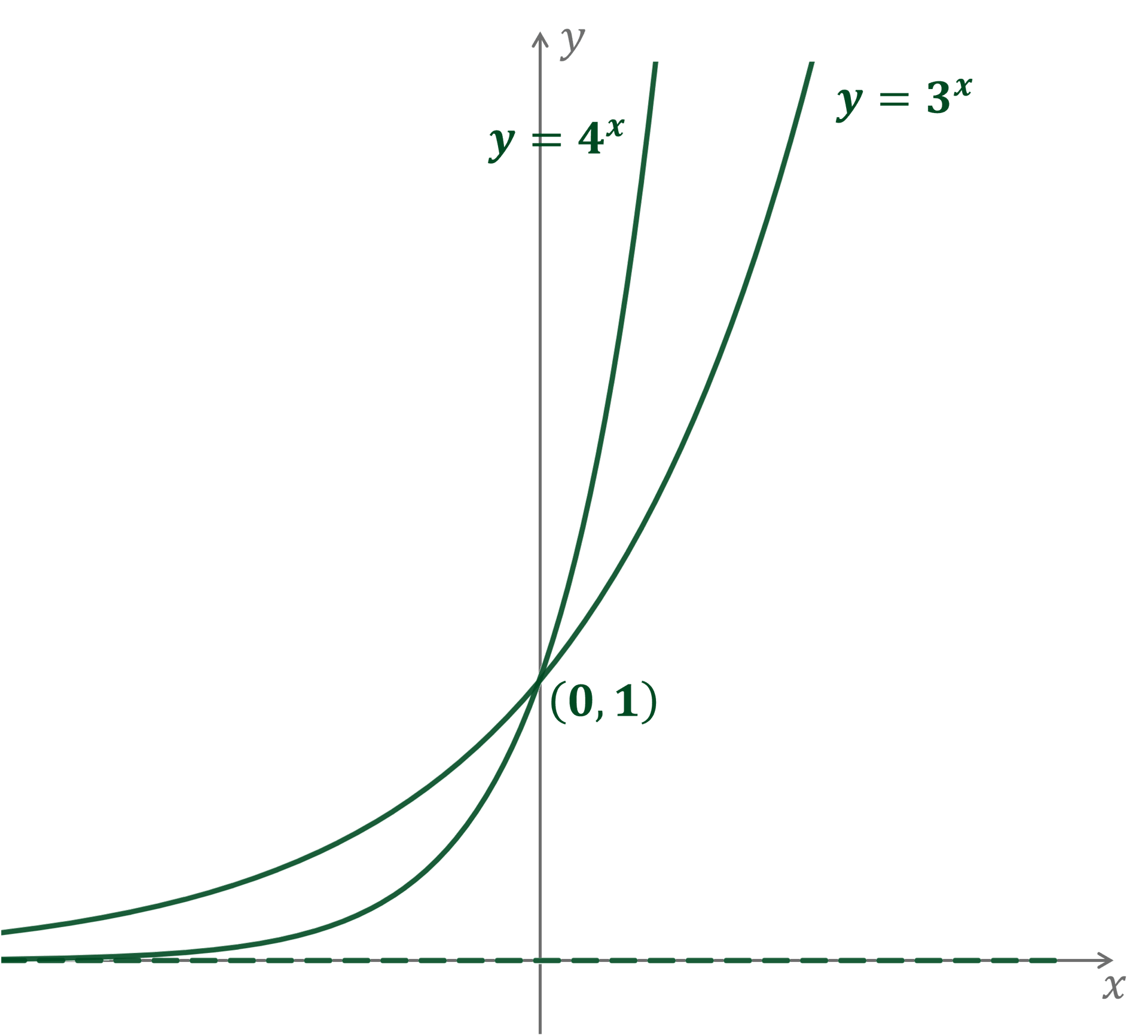Exponential Functions & Graphs
What is an exponential function?
- An exponential function is of the form
- Its domain is the set of all real numbers
- Its range is the set of all positive real numbers
- An important exponential function is
- e is the mathematical constant
- See the following note on "
" for more details
- e is the mathematical constant
What are the key features of exponential graphs?
- The graphs have a
-intercept at
- Because
- Because
- The graph will always pass through the point
- Because
- Because
- The graphs do not intersect the
-axis
- The graphs have a horizontal asymptote at the x-axis
- The graphs have a horizontal asymptote at the x-axis
- The graphs do not have any minimum or maximum points

- When
- For
the higher value of
is the “lower” graph
- Where
the higher value of
is the “higher” graph

- For
- When
- Where
the higher value of
is the “lower” graph
- Where
the higher value of
is the “higher” graph
- Where

- When
- The graph is a horizontal line through
- Because
for all values of
- The graph is a horizontal line through
Worked example
On the same set of axes, sketch the graphs of and
.
Both graphs will have the 'typical' exponential shape for the
case
will be the 'lower' graph for
,and the 'higher' graph for
Both graphs go through and have an asymptote at the
-axis







